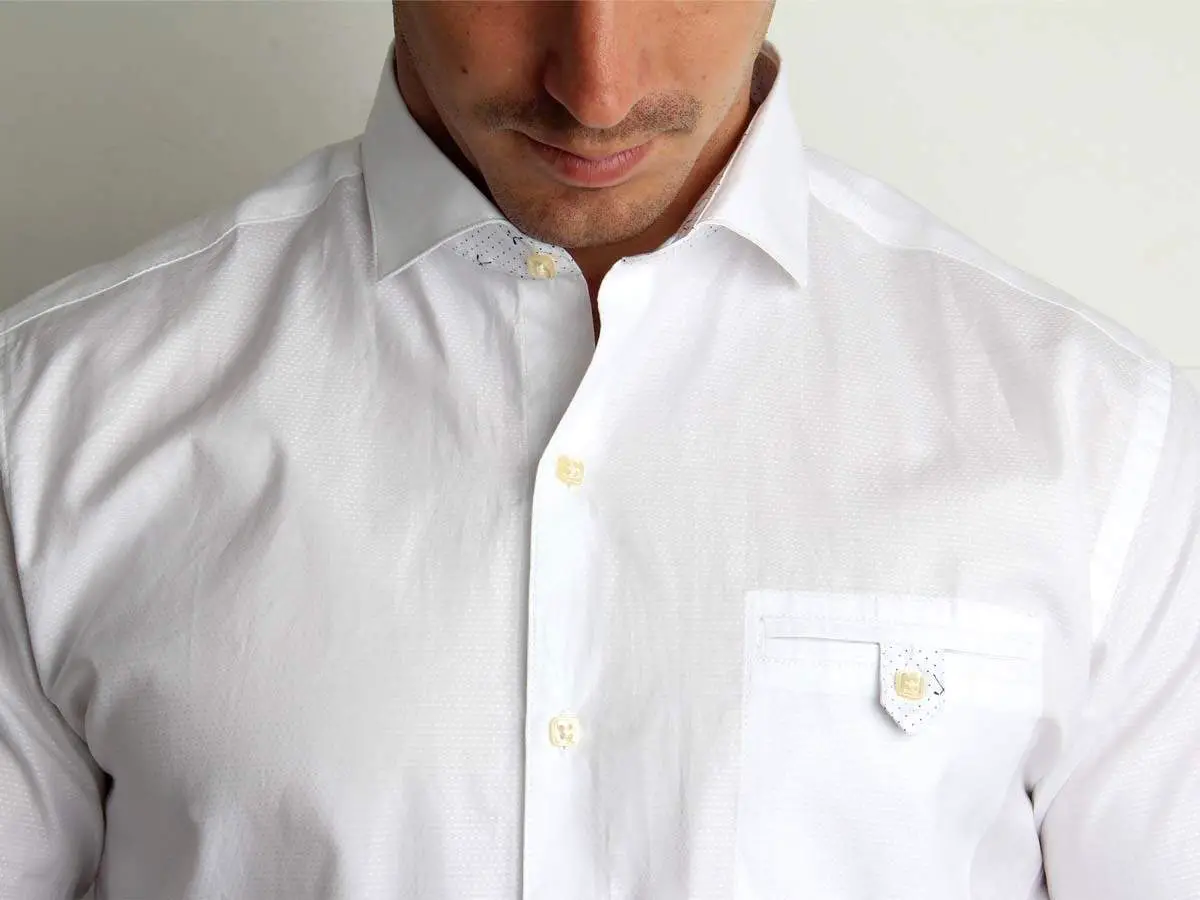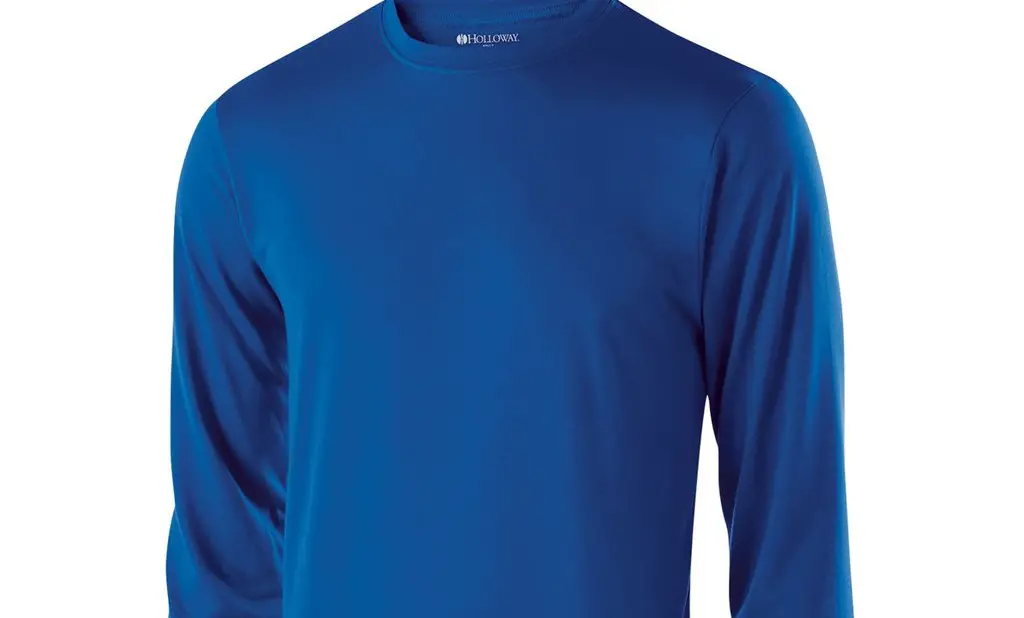Well, cotton and polyester are the two most popular fabrics you’ll come across when buying shirts, online or offline today. Do you know why they’re so popular, though?
That’s because they are widely used fabrics, and with good reason. And if you’re attempting to decide between cotton and polyester shirts, keep reading this article to learn about the advantages and disadvantages of each.
You cannot accurately judge what is better between cotton and polyester. Both are inexpensive and long-lasting enough to tolerate multiple washings. However, many people believe that a blend of both cotton and polyester offers the best of both worlds. In this way, you’ll get the softness and breathability that comes with cotton along with the strength and durability of polyester.

Today we’ll provide you with all the necessary information you need to know about cotton and polyester shirts, however, we’ll also be discussing the blend between them and why you should consider it.
Pros and cons cotton shirts have to offer
Pros of Cotton Shirts
√ Cotton is a robust material. Its resilience and tenacity increases as the moisture content rises.
√ Cotton is a natural material that is both soft and breathable. As a result, it’s popular for undergarments, socks, and skin-tight clothing.
√ 100% cotton shirts are a good heat conductor, keeping you cool in the summer and warm in the winter. (Best Work Shirts for Hot Weather)
√ Cotton shirts absorb a lot of moisture and release it into the air without making you sweat.
√ Because of its hypoallergenic nature, cotton shirts are ideal for people with skin issues and as it does not irritate the skin.
√ Because cotton shirts and pants are not harmed by moderate heat, they can be ironed without causing damage.
√ Cotton shirts can tolerate many washings on a regular basis.

Cons of cotton shirts
⊗ The strength or tenacity of cotton reduces as the temperature rises.
⊗ Resilience is low and therefore your cotton shirts will not last very long.
⊗ Cotton shirts crease readily and do not rebound well after being creased.
⊗ Your cotton shirts will absorb a lot of moisture and take a long time to dry. While it might be quite beneficial in the summer, it can be pretty harmful to your health in cold temperatures.
⊗ Cotton is very sensitive to mildew which causes rotting and foul smell, and also silverfish infestations which consumes cotton and degrades its quality.
⊗ Stain resistance is poor in cotton shirts
⊗ Cotton shirts have a higher tendency to shrink
Pros and cons of polyester shirts
Pros of Polyester Shirts
√ Polyester fibres are naturally hydrophobic, which makes your polyester shirts water-repellent.
√ Polyester shirts are tough and long-lasting, with good wear and abrasion resistance.
√ Because polyester shirts are less absorbent, they dry faster. Polyester clothing takes far less time to dry than cotton apparel.
√ Your polyester shirts will keep their crease for longer and will not wrinkle easily.
√ It’s simple to wash and doesn’t shrink.
√ Polyester is relatively cheap and easy to blend with other fibers.
√ Its properties do not alter in wet or dry conditions, and it remains generally stable.
√ Regardless of what kind of harsh wash and dry cycle you put it through, your polyester shirt maintains its shape and is not prone to shrinking and stretching.

Cons of Polyster Shirts
⊗ Polyester shirts, especially in hot weather, are non-breathable and difficult to wear near to the skin, this is because of low moisture absorption.
⊗ When wet, it feels clammy and cold because moisture lingers on the fibre surfaces closest to the skin.
⊗ Polyester shirts can be difficult to clean due to its chemical resistance and limited absorbency, as water and chemicals cannot permeate the fabric and clean it.
⊗ Polyester is regarded as a dense fibre. Therefore, it’s manufactured as a lightweight fabric.
⊗ Polyester traps odors, making it unsuitable for all day, heavy excursions.
What would we recommend?
Well, our experts are of the opinion that blending the two fibers (cotton and polyester) is actually a good option.
Blending is the process of combining two or more fibers to create a yarn that maximises each fiber’s strengths while reducing its limitations.
To attain optimal performance, natural fibers are frequently combined with man-made fibers.
As a result, a 50/50 blend of cotton and polyester offers the best of both worlds.
50/50 blend shirts are less expensive than 100% cotton shirts, yet they retain the softness of 100% cotton clothing. Even better, because these shirts are made of 50% polyester, they have a higher level of toughness and will last longer.
Why blend with cotton and polyester fibers? (Their advantages and limitations)
Cotton is included in blended fiber clothing because it absorbs sweat, yet wet cotton shirts stick to the body and are uncomfortable to wear.
This difficulty is solved by combining cotton and polyester to achieve comfort without sticking. Cotton-polyester blends combine the advantages of both fabrics.
They are, for example, more durable than fabrics made entirely of cotton. They’re also tear and crease resistant, as well as easy to clean and maintain. These mixtures are also more breathable than pure polyester and shrink less than cotton.
Polyester, too, is frequently combined with different fibers to enhance the best qualities of the fibers. It is commonly used in these blends due to its durability and moisture wicking qualities.
Before we give out the information on recommended blended shirts, you need to look for these qualities in a shirt:
1.) Breathability- it refers to the fabric’s porosity and permeability. This is the transfer of water vapour from one part of the fabric to the other. Breathability is something that most shirts have, but don’t confuse it with moisture wicking.
2.) Moisture wicking ability- of course your shirt needs to have moisture wicking abilities as it is a clothing that you will be probably wearing throughout the day at work.
3.) Texture- the sense of touch detects a quality, like how soft or firm a fabric is, or how smooth or rough it will feel against your skin.
4.) Fit- while shopping for a shirt, you’ll see many options like slim fit, modern fit, classic fit and extreme slim fit. Always go for whatever fits you the best as anything shirt that fits you well is definitely going to feel comfortable.
5.) Cost- always be sure of your budget. It’s easier to stick to your budget while purchasing a shirt as there are different shirts available at different price ranges, ranging from 20$ to 200$.
Below, we have provided you with some recommended shirts that are a blend of cotton and polyester:
1.) Van Heusen Oxford Solid Shirt
- Easy Care: Machine washable; no dry cleaning required
- Regular Fit: A generous cut through the shoulders, chest and waist for total comfort and a classic fit
- Button-Down Collar: More relaxed & casual collar; appears neat with or without neckwear so you can dress it up or down
- Chest Pocket: Classic design holds all your essentials
Prices pulled from the Amazon Product Advertising API on:
Product prices and availability are accurate as of the date/time indicated and are subject to change. Any price and availability information displayed on [relevant Amazon Site(s), as applicable] at the time of purchase will apply to the purchase of this product.
Made with a blend of 60% and 40% polyester, this shirt gives you the goodness of both fibers combined. It is breathable and has moisture wicking qualities making it ideal for you to wear the whole day with comfort.
2.) DELCARINO Slim Fit Casual Shirt
- Machine wash cold setting keeps colors vibrant and long-lasting durability
- Polyester/Cotton
- Casual,Long sleeve,Lightweight
- Suitable for all occasions and seasons
- Size are US standard size,
Prices pulled from the Amazon Product Advertising API on:
Product prices and availability are accurate as of the date/time indicated and are subject to change. Any price and availability information displayed on [relevant Amazon Site(s), as applicable] at the time of purchase will apply to the purchase of this product.
These blended cotton and polyester shirts are lightweight and come with a variety of vibrant colors.
3.) XTAPAN Casual Slim Fit Shirt
- 95% High Quality COTTON, 5% Polyester
- BREATHABLE,ANTI-WRINKL,NOT PILLING AND FADE
- CASUAL AND STYLISH STYLE
- ANY Occasion
- Machine Wash/Hand Wash,low iron if necessary,dont bleach
Prices pulled from the Amazon Product Advertising API on:
Product prices and availability are accurate as of the date/time indicated and are subject to change. Any price and availability information displayed on [relevant Amazon Site(s), as applicable] at the time of purchase will apply to the purchase of this product.
This blended (cotton 95% and polyester 5%) shirt comes with breathable qualities and the polyester blend makes it durable so that it will last you a very long time.
4.) ARROW USA Short Sleeve Shirt
- Comfort: Soft brushed plain weave fabrication peached for softness
- Wrinkle Free: Weve ironed it out so you could put the fun back in
- Easy Care: Machine washable so youre able to wash and wear
- Features a shirttail hem and single chest pocket
Prices pulled from the Amazon Product Advertising API on:
Product prices and availability are accurate as of the date/time indicated and are subject to change. Any price and availability information displayed on [relevant Amazon Site(s), as applicable] at the time of purchase will apply to the purchase of this product.
This cotton-polyester blend comes with no wrinkle feature and is usually suitable for summer days. Do check out all the color options as it comes in a variety of colors.
To conclude, when it comes to what is the ideal material for shirts, there are many options. Knowing the differences between cotton and polyester will spare you a lot of headaches in the future when you go to purchase one for yourself.
Both cotton and polyester have their own set of advantages and disadvantages, so it’s a matter of deciding what’s most essential to you.
Make a list of what you like and don’t like about a specific fabric so you can keep track of what works and what doesn’t.












